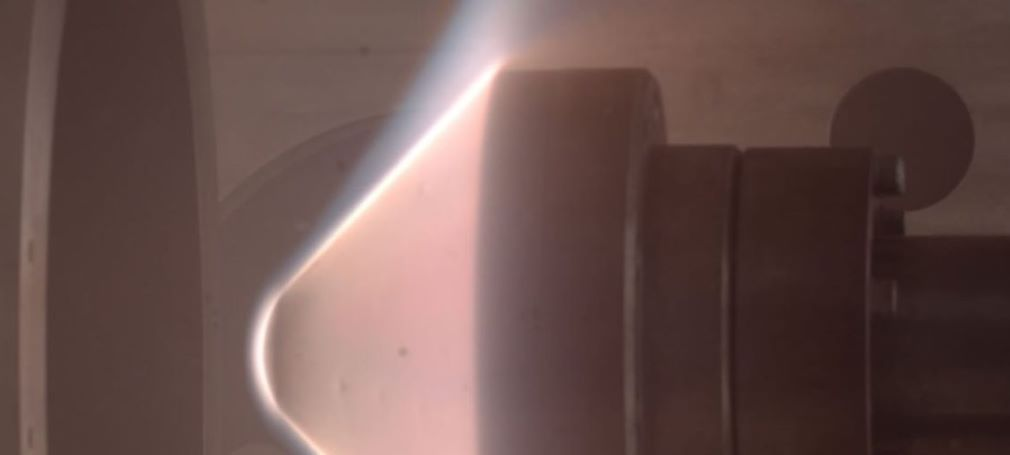Speaker
Description
At the Institute of Space Systems (IRS) of the University of Stuttgart three plasma wind tunnels (PWK1, PWK3, PWK4) are operated to experimentally simulate spacecraft entry into a large variety of atmospheres. In this work, the facilities PWK1 and PWK3 are used to study plasma emission relevant for Mars entry and hyperbolic Earth entry, respectively. In both scenarios, radiative heat flux significantly contributes to the overall thermal load on the thermal protection system (TPS) of a spacecraft. Moreover, analyzing the plasma radiation in ground testing facilities allows for non-intrusive flow characterization, aimed at better understanding the prevailing test conditions. This presentation provides an overview of a large variety of optical diagnostics applied to air and carbon dioxide plasma in PWK1 and PWK3, respectively.
Radial profiles of plasma emission are recorded with an Ocean Optics HR4PRO USB spectrometer in order to identify dominantly radiating species and determine excitation temperatures. Moreover, the radiation simulation tool PARADE (Plasma Radiation Database) is used to determine local number densities of plasma species. A spectral fitting algorithm, developed at IRS for air and carbon dioxide plasma, allows for the automated spectral analysis of large OES datasets in the order of hundreds of spectra, acquired in the course of this work.
Besides OES, specific optical diagnostic methods are developed for characterization of the Mars-relevant carbon dioxide plasma. Tunable Diode Laser Absorption Spectroscopy (TDLAS) is applied to measure the translational temperature of atomic oxygen inside the high-enthalpy plasma jet. This laser absorption method also provides radial number density profiles of excited oxygen states.
An optical setup for Fourier-Transform Infrared (FTIR) Spectroscopy is designed and built at PWK3 at the moment. This system shall target CO2 as well as CO at the same time in the plasma jet, providing information about excitation temperatures and number densities. A nitrogen purging system is installed already to decrease the signal absorption by the atmosphere in the optical path as well as the instrument itself.
With regard to the air plasma in PWK1, extensive studies have been carried out on the effect of a magnetic field on highly enthalpic air plasma flows. For this purpose, thousands of emission spectra of the plasma flow in front of an MHD plasma probe were recorded. In addition, a radiative heat flux (HF) insert was designed and mounted in the stagnation point of a MHD plasma probe. A high temperature superconducting solenoid was used to generate the magnetic field within the MHD plasma probe. The radiative HF sensor consists of five thermo-piles, each positioned at a different angle, with the aim of measuring the radiative HF at the stagnation point over a wide solid angle. Preliminary results indicate that the radiative HF at the stagnation point tends to increase with increasing magnetic field strength, a trend also observed in numerical simulations.
The current effort to design and build the optical setup SEMA (Scanning Etalon for MHD Applications), a confocal Fabry-Perot interferometer, is expected to provide further insight into the effects of magnetic fields on the translational temperature changes in the shock and boundary layer of high enthalpy air plasmas. This will be a key element in better understanding the influence of Joule heating in the shock layer on the radiative HF at varying magnetic field strengths.
Summary
The Institute of Space Systems (IRS) at the University of Stuttgart operates three plasma wind tunnels (PWK1, PWK3, PWK4) to simulate spacecraft entry into various atmospheres, with PWK3 and PWK1 specifically used to study plasma emission for Mars and hyperbolic Earth entry. In this work, a wide range of optical diagnostics, including optical emission spectroscopy, laser absorption spectroscopy, infrared spectroscopy, Fabry-Perot interferometry and a radiative heat flux sensor, are applied to analyze plasma radiation and characterize flow conditions non-intrusively.

